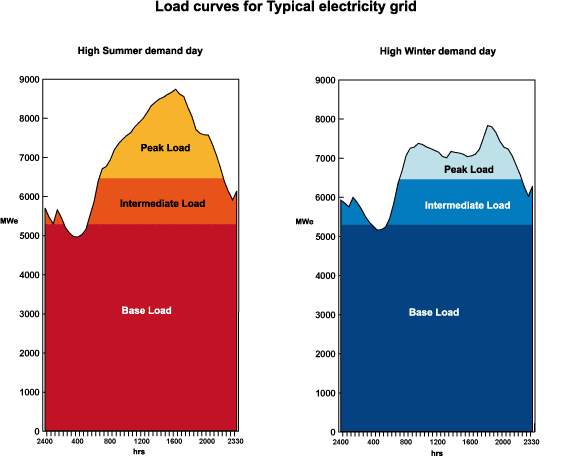2m. Types of Generation
The demand for electricity varies throughout the day and also with the seasons. In general, the demand for electricity dips overnight as the majority of people sleep. Demand increases from the morning throughout the day, peaking in the evenings as people return home to cook, eat and watch TV. The seasons also affect electrical demand as furnaces and air conditioners are used in homes and businesses.
Base Load Generation
These plants supply all or part of the base demand (load) on the electric power grid. A base load generating plant runs continuously, producing electricity at a nearly constant rate for most of the day. These plants are at their most efficient when they operate at full capacity. The lignite-fired plants in North Dakota generate electricity to meet base load demand.
Peaking Generation
These power plants help meet electricity demand when demand is at its peak, like when electricity use for air conditioning and heating increases during hot weather and cold weather respectively. Compared to base load generation, peaking generation is relatively inefficient and costly. Natural gas and hydroelectric power plants are relatively quick and low-cost to start up and are often used for peak demand electrical generation.
Intermediate Load Generation
These plants cycle with demand, meaning they operate when people need electricity the most—usually 12-16 hours a day. They usually shut down in the late evening and on the weekends as demand decreases. Renewable energy sources such as wind and solar generation work well for meeting intermediate load electrical needs.
Base, Intermediate and Peak Loads for High Demand Days
The image shows typical loads on high demand days in winter and summer.

